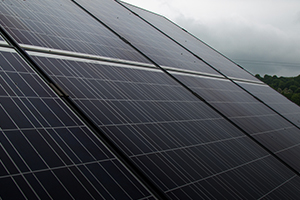Low-Light Solar Panels

The idea of harvesting sunlight from the photosynthetic dyes produced by bacteria and converting it into energy is not really new. But it has (in the past) relied on the difficult process of isolating those chemicals, which can be expensive and time-consuming. Now, researchers have found a way to bypass that step and simply use the bacteria to generate power. The new process reduces the cost of dye production to about one-tenth that of earlier biogenic cells, but the biggest benefit is that the new cells work as well in low light as they do in bright light.
E. coli bacteria were genetically engineered to produce large concentrations of lycopene, a red-orange dye that is very effective at harvesting sunlight. The bacteria were then coated with a semiconductor mineral and applied to a glass surface, which acted as an anode. The new cells generated a current density of 0.686 milliamps per square centimeter, which is almost double that of other bacteria-based solar cells. The developers are confident that the design could be optimized to rival the efficiencies of conventional solar cells.
The innovation could lead to wider adoption of solar power in parts of the world where skies are commonly overcast. Other potential applications for the technology include mining and deep-sea exploration.
For information: Vikramaditya Yadav, University of British Columbia, Chemical and Biological Engineering, Vancouver Campus, 2360 East Mall, Vancouver, British Columbia, Canada V6T 1Z3; phone: 604-822-3238; email: info@chbew.ubc.ca; website: http://www.chbe.ubc.ca/